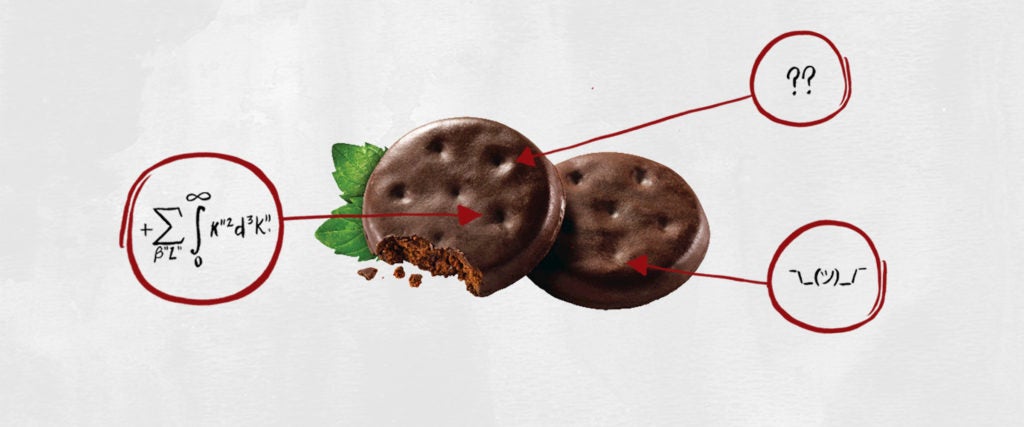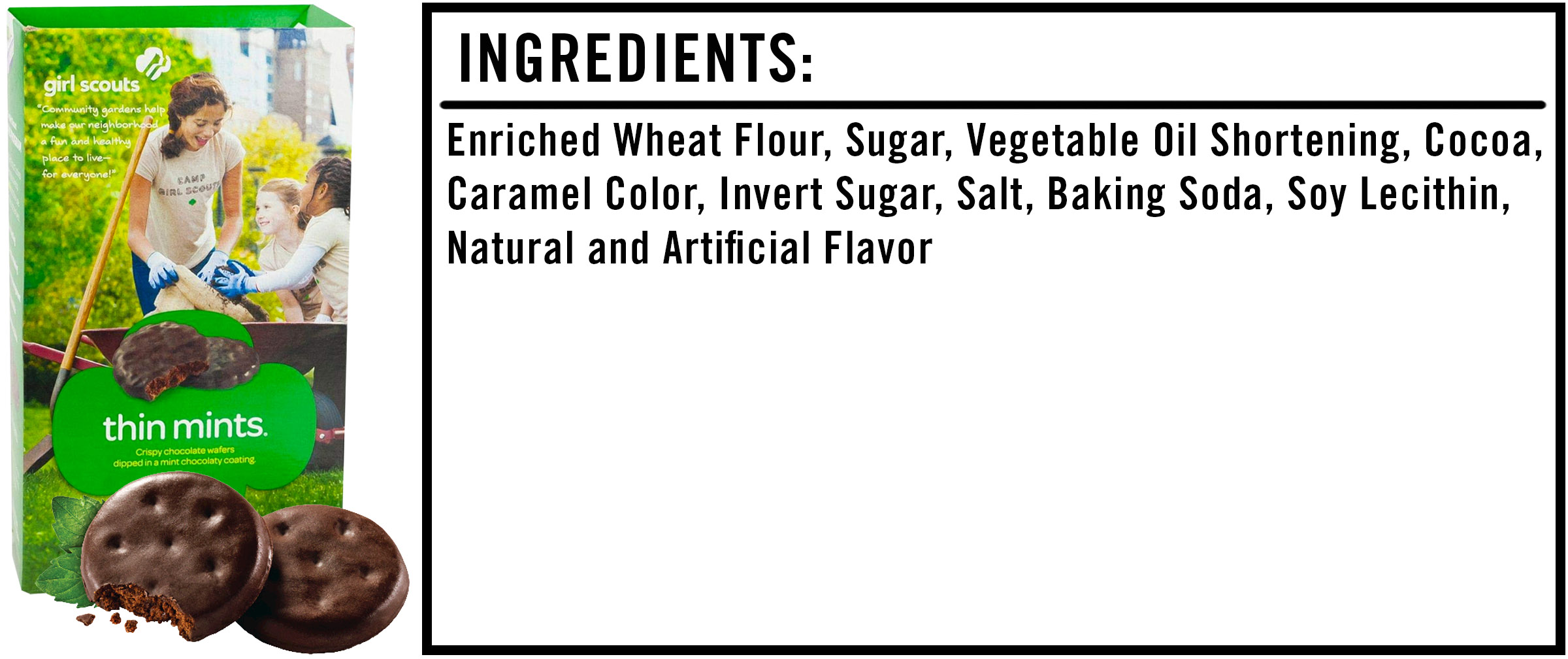We’re often told that you should never eat anything (or put anything on your body) if you don’t recognize everything on the ingredients list. But since most of us have no idea what xanthan gum or potassium benzoate are — or more importantly, what they’re doing to our bodies — we’re decoding the ingredients in the many things Americans put in (and on, or near) themselves.
This edition: ABC Bakers Thin Mints, which are made from 10 separate ingredients that we’ve broken down as they appear online. (Note: There’s one other licensed baker of Thin Mints, Little Brownie Bakers, whose ingredients differ slightly. The only real differences are that, in their recipe, Little Brownie Bakers includes oil of peppermint and sorbitan tristearate, which prevents the chocolate from going gray. Both are safe.)
The Ingredients
1) Enriched Wheat Flour (Flour, Niacin, Reduced Iron, Thiamine Mononitrate, Riboflavin, Folic Acid): As we learned in our exploration of the many, many, many ingredients in the McDonald’s Big Mac, enriched flour can end up being far less “enriched” than the name would have you believe. In addition to containing more calories than whole wheat flour, the bleaching process enriched flour often undergoes produces an unfortunate byproduct: A chemical called alloxan, which has been found to induce diabetes in lab-animal test subjects by destroying their pancreas. Whether or not that applies to this enriched flour is hard to say.
2) Sugar: Four Thin Mints (one serving) contains 10 grams of sugar, which is probably fairly normal as far as cookies are concerned. It’s still a lot, though: For reference, the American Heart Association recommends men consume no more than 36 grams and women consume no more than 25 grams of added sugar a day.
3) Vegetable Oil Shortening (Palm and Palm Kernel Oils): The purpose of shortening is to trap air bubbles, giving baked goods a delicate, crumbly texture. While that makes them nicer to eat, according to physician and biochemist Cate Shanahan, consuming too much vegetable oil — which is easy to do, considering Shanahan says roughly 45 percent of the average American’s calories come from refined oils — has serious repercussions (e.g., fatty liver disease, insulin resistance and migraines). Plus, of all the vegetable oil shortenings out there, palm oil in particular is awful for the environment.
4) Cocoa (Processed With Alkali): Also known as Dutch process cocoa powder, this has a more earthy flavor than your average cocoa powder. “Consuming large amounts of alkalized cocoa powder is possibly unsafe due to the caffeine content,” Dagan Xavier, ingredient expert and co-founder of Label Insight, warned during our exploration of the ingredients in chocolate Muscle Milk. “This can cause problems for pregnant women, where the caffeine could cross the placenta and enter the bloodstream of the fetus.” Cocoa may also trigger migraines in those susceptible to them.
5) Caramel Color: Caramel color is what makes these cookies more brown. Unfortunately, as we discovered in our exploration of the ingredients that make up Diet Coke, caramel coloring has an incredibly controversial byproduct called 4-methylimidazole (4-MEI). A 2007 study found that mice fed a diet of 4-MEI developed cancerous lung tumors as a result. The FDA quickly pushed back, noting that a human would have to consume more than 1,000 cans of soft drinks (which are notoriously high in caramel coloring) every day for two years to reach comparable levels of 4-MEI.
Who’s right is still unclear. More recent studies argue that levels of 4-MEI are, in fact, high enough in soda (and possibly other foods) and consumed in sufficient quantities by Americans to increase the risk of developing cancer. Even more recent studies say that caramel coloring is just fine. Do you really have to worry about this in your Thin Mints? Probably not.
6) Invert Sugar: Invert sugar is a liquid sweetener made from table sugar and water. It can be especially useful in baked goods because it retains moisture.
7) Salt: This boosts flavor.
8) Baking Soda: Baking soda is often used as a leavening agent, helping the dough rise and become porous by increasing the surface area.
9) Soy Lecithin: Soy lecithin is a component of fat found in, you guessed it, soy. It’s typically added to food products as an emulsifier, which means it helps the numerous ingredients found in these cookies mix together. In some cases, soy lecithin can also help foods stay fresh while they sit on the shelves.
10) Natural and Artificial Flavor: While natural flavors are literally flavors derived from an actual food source — i.e., peppermint flavoring taken from real peppermint plants — artificial flavors are chemical compounds created in a lab that mimic a natural flavor in some way. While that may sound unhealthy, as Shanahan told us during our exploration of all 26 ingredients in nacho-flavored Doritos, these flavorings are added in such small quantities that they shouldn’t cause you any harm.
The Takeaway
There’s nothing “good” in Thin Mints, but they are cookies, after all. Just try to keep your consumption to a minimum, no matter how much you tell yourself you’re funding the Girl Scouts.


